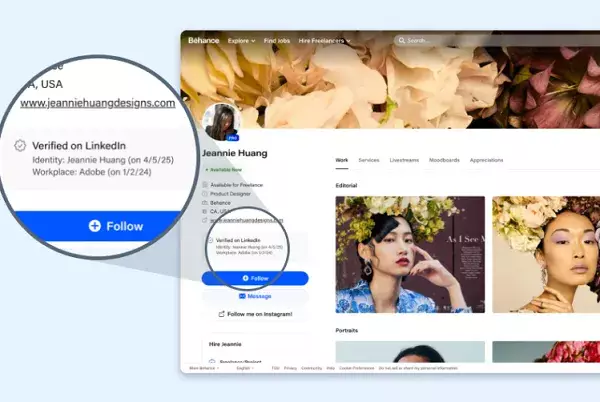In a world increasingly fraught with deception and impersonation, LinkedIn’s decision to enable third-party platforms to publicly display its ID verification markers stands as a pivotal development in fortifying professional credibility online. Set against the backdrop of the digital age, where anonymity often breeds irresponsibility, LinkedIn’s initiative emerges as a beacon of hope for professionals eager to establish and maintain trust in their networks. By embracing the power of identity verification, LinkedIn isn’t just fostering confidence among its users; it’s setting a precedent for other social media platforms.
A Layered Approach to Identity Verification
Launched in 2023, LinkedIn’s free ID confirmation process is not merely about putting a verification checkmark next to a user’s name. Rather, it represents an evolving ecosystem where individuals can validate their identities in a meaningful way. Unlike traditional celebrity or paid verification badges seen on other platforms, LinkedIn’s approach is rooted in authenticity — a vital ingredient for cultivating genuine professional relationships. By cooperating with various third-party identity verification providers globally, LinkedIn has opened the doors for more users to confirm their identity, credibility, and professional worth.
This initiative goes hand-in-hand with the expanding partnership between LinkedIn and platforms like Adobe, allowing their users to showcase a “Verified on LinkedIn” badge. By automating the verification process within Adobe’s offerings, such as its Content Authenticity app, this collaboration significantly reduces the burden of separate verification systems for users and fosters a seamless integration of trust into professional portfolios.
The Battle Against Impersonation and Misinformation
The introduction of ID verification within professional networks is not merely a benefit for users; it symbolizes a unified stand against platforms inundated with bots and fake accounts. An alarming increase in impersonation and spam has depicted a tumultuous landscape for users striving to connect authentically. Despite longstanding calls for universal ID verification across social platforms, regulatory action has been scant. LinkedIn’s proactive step towards a trustworthy online environment could potentially inspire other networks to adopt similar systems, thus promoting a culture of accountability.
Moreover, with more than 80 million LinkedIn members participating in the ID confirmation process, the initiative holds promise for creating a vast network of verified profiles. This expanded identification framework serves to strengthen connections, ensuring that users are engaging with real professionals rather than shadowy facades. It opens up opportunities for enhanced filtering of genuine talent, bolstering the platform’s utility by steering users toward authentic engagements.
Balancing Anonymity with Accountability
While incorporating ID verification is an encouraging move, it also raises pressing questions about user anonymity. For many, online anonymity is crucial for free expression and communication. The delicate balance between maintaining a safe platform devoid of deceit and allowing users their privacy remains a contentious issue. LinkedIn’s model walks this fine line with care, taking into account the potential hesitations among users wary of exposing their identities fully.
However, this initiative is promising as it showcases that verifiable identities can exist alongside personal privacy. The opt-in nature of LinkedIn’s verification process empowers users to control how they present themselves within a professional context while reinforcing the moral imperative that social interactions should be anchored in authenticity.
Setting the Stage for Future Regulations
LinkedIn’s venture into third-party ID verification serves as a blueprint for devising regulatory standards in the realm of social media. The partnership-driven approach highlights the effectiveness of leveraging existing identification networks rather than imposing cumbersome regulations on users. If this model gains traction, it might usher in the era of mandatory user verification across various social platforms, thus ensuring a more secure digital landscape.
Furthermore, as LinkedIn integrates its verification practices with Adobe’s “Content Credentials,” it does more than validate identity; it paves the way for enhanced content ownership and accountability in the realm of digital media. In an age where AI-generated fakes are increasingly sophisticated, establishing a systematic verification process may become indispensable for preserving artistic integrity and fostering trust.
LinkedIn’s initiatives signal a transformative shift in the professional networking landscape, invoking hope for a future where authenticity reigns supreme and professionals can connect without the cloud of uncertainty overshadowing their interactions.

